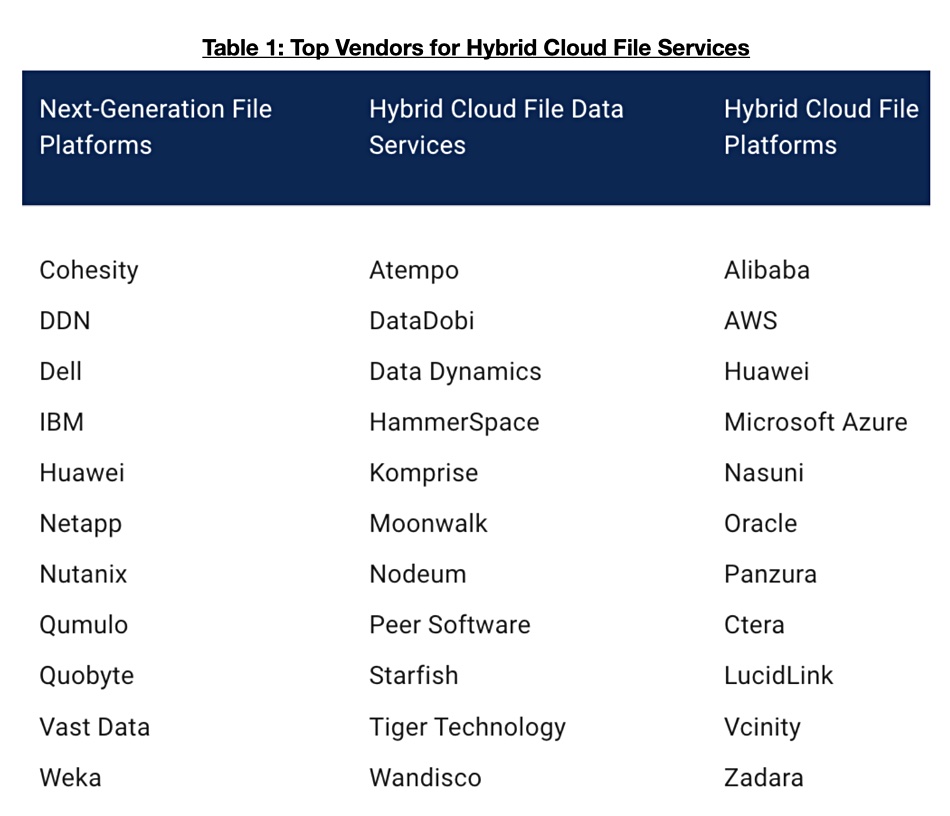A report put out at the end of February titled “Modernize Your File Storage and Data Services for the Hybrid Cloud Future” by Gartner research VP Julia Palmer pulls a lot into focus about the cloud file services marketing war – which B&F has written about in the past.

Palmer starts from more or less the same points: unstructured (file) data is growing and organizations are using the scalability of the public cloud for several things, bursting compute capacity, bursting storage, archival storage, remote worker access and so forth.
There are three groups of suppliers, she says:

- Next-generation file platforms: on-premises filers adding hybrid cloud capability and new software-only file services suppliers
- Hybrid cloud file data services providing access, movement, life cycle management and orchestration
- Hybrid cloud file platforms providing public cloud-based distributed file services
A table lists representative suppliers in each category:

Next-generation file platforms have characteristics such as “being designed to integrate and leverage public cloud IaaS.” Vendors like NetApp and Qumulo have become software-defined and ported their filer operating systems to the public cloud, providing a file system and services abstraction layer covering the on-premises and public cloud worlds. VAST Data is heading the same way. Weka is there already.
At the other end of this spectrum – hybrid cloud file data services are in the middle – are the hybrid cloud file platforms. We have covered CTERA, Nasuni and Panzura often, also LucidLink and to an extent Vcinity, but not really included Zadara in this category. Nor have we looked at the public cloud suppliers themselves or Huawei or Oracle as being in this category.
The mid-spectrum players provide file data services, such as migration – Atempo, Data Dobi, Data Dynamics, Peer Software and WANdisco, for example. Komprise also has a migration offering but is better known for its file lifecycle management capabilities, as is Nodeum. Hammerspace is pioneering its data orchestration technology.
Palmer really nails it with the a tripartite viewpoint, which is a neat way to group vendors and then to compare them in the three categories and map their capabilities to an organization’s needs and direction.
It leaves us asking if the mid-spectrum hybrid cloud file data services players face having their capabilities provided as features by the next-generation file platforms on the one hand and the hybrid cloud file platforms on the other.
The Gartner paper doesn’t look at object storage, which we think may be a limiting factor, especially as combined file and object offerings are becoming common. We can view S3 as AWS’s hybrid cloud object platform and also look at Pure Storage, VAST Data and others as offering next-generation file+object platforms, while Cloudian and Scality layer file access on their object storage products, which already have public cloud support.








